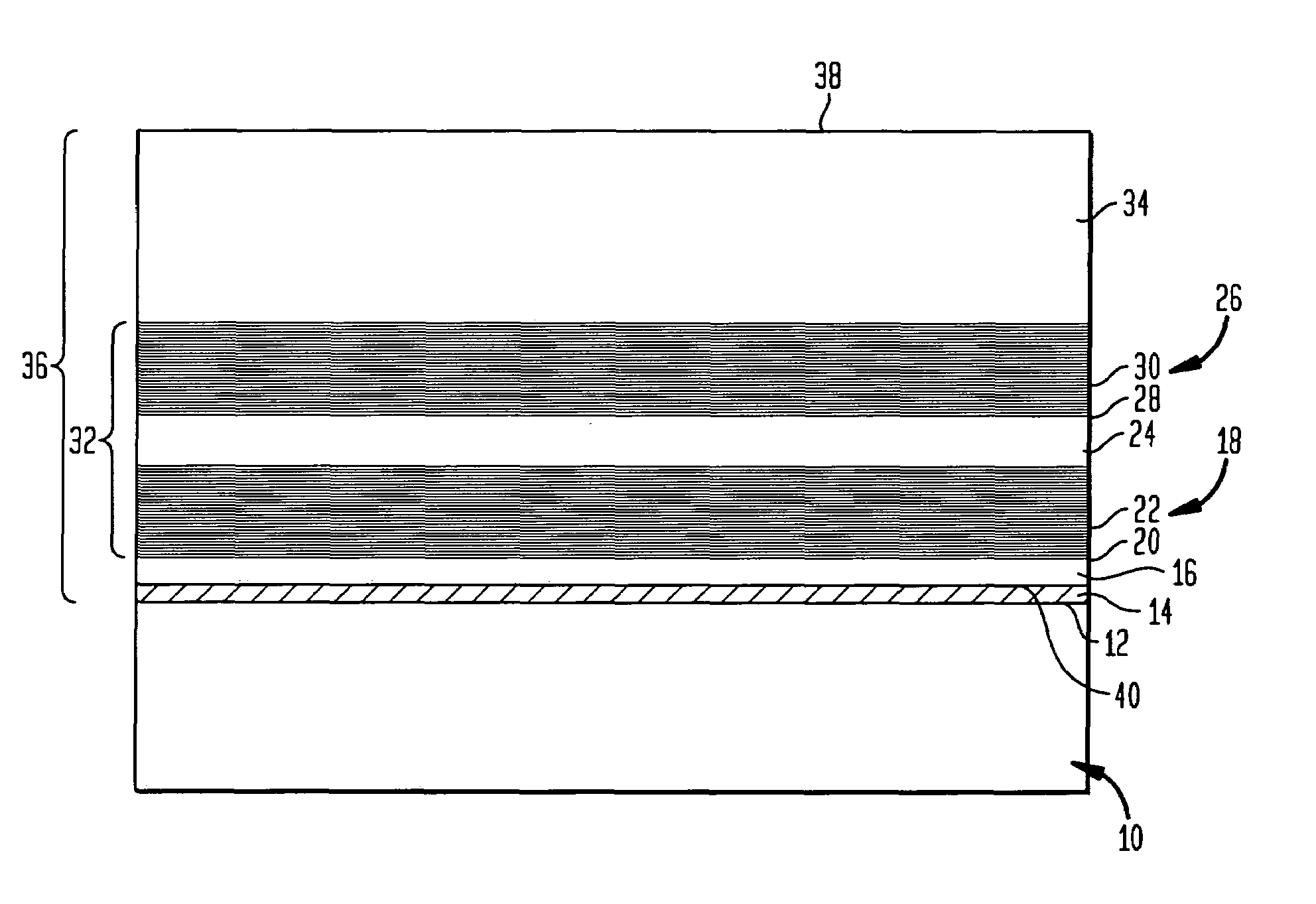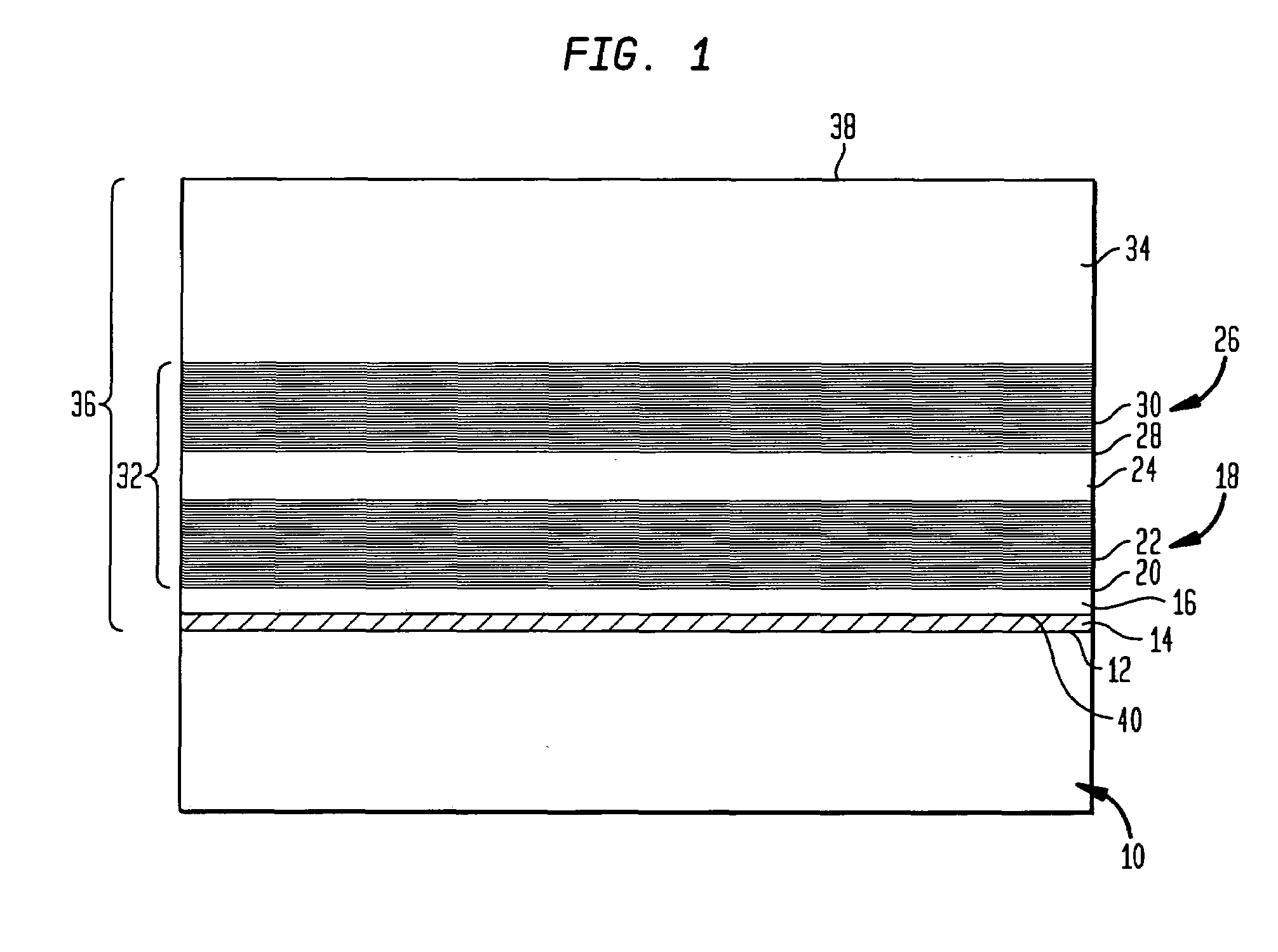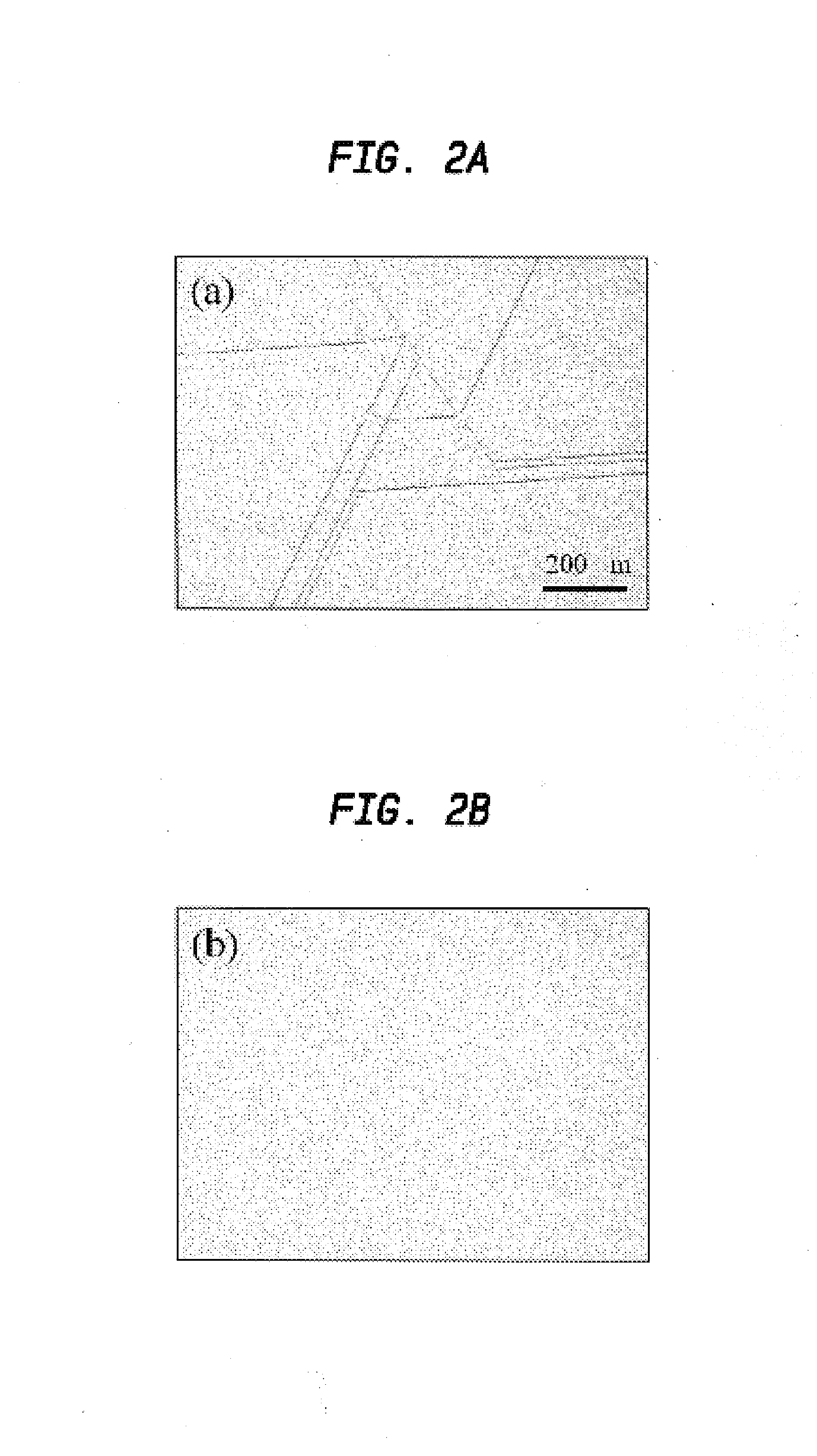Semiconductor structures for gallium nitride-based devices
a technology of silicon nitride and semiconductor structure, applied in the direction of crystal growth process, polycrystalline material growth, chemistry apparatus and processes, etc., to achieve the effect of reducing the electrical performance limitations of silicon substrates and achieving the resolution of electrical performance limitations
- Summary
- Abstract
- Description
- Claims
- Application Information
AI Technical Summary
Benefits of technology
Problems solved by technology
Method used
Image
Examples
Embodiment Construction
[0030]As used in the present disclosure, the term “III–V semiconductor” refers to a compound semiconductor material according to the stoichiometric formula AlaInbGacNdAsePf where (a+b+c) is about 1 and (d+e+f) is also about 1. The term “nitride semiconductor” or “nitride-based semiconductor” refers to a III–V semiconductor in which d is 0.5 or more, most typically about 0.8 or more. Most preferably, the semiconductor materials are pure nitride semiconductors, i.e., nitride semiconductors in which d is about 1.0. The term “gallium nitride based semiconductor” as used herein refers to a nitride semiconductor including gallium, and most preferably including gallium as the principal metal present, i.e., having c≧0.5 and most preferably ≧0.8. The semiconductors may have p-type or n-type conductivity, which may be imparted by conventional dopants and may also result from the inherent conductivity type of the particular semiconductor material. For example, gallium nitride-based semiconduct...
PUM
| Property | Measurement | Unit |
|---|---|---|
| temperature | aaaaa | aaaaa |
| diameter | aaaaa | aaaaa |
| temperature | aaaaa | aaaaa |
Abstract
Description
Claims
Application Information
 Login to View More
Login to View More - R&D
- Intellectual Property
- Life Sciences
- Materials
- Tech Scout
- Unparalleled Data Quality
- Higher Quality Content
- 60% Fewer Hallucinations
Browse by: Latest US Patents, China's latest patents, Technical Efficacy Thesaurus, Application Domain, Technology Topic, Popular Technical Reports.
© 2025 PatSnap. All rights reserved.Legal|Privacy policy|Modern Slavery Act Transparency Statement|Sitemap|About US| Contact US: help@patsnap.com



